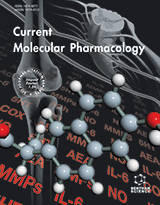Abstract
Background: Age-dependent toxic effects of organophosphorus pesticides (OPs) have not been fully understood. The current study aimed to investigate the cardiotoxic damage of chlorpyrifos (CPF) by evaluating oxidative modifications in young (2-month old), middle-aged (10- month old), and aged (20-month old) rats.
Objective: Five mg/kg of CPF was administered orally for 45 days to young, middle-aged, and aged male Wistar rats. In the end, animals were anesthetized and the heart of each rat was dissected for biochemical assay.
Methods: Malondialdehyde (MDA), nitric oxide (NO), glutathione (GSH), total antioxidant capacity (TAC), and superoxide dismutase (SOD) were assessed in the cardiac tissue of rats.
Results: The results indicated an increase in the levels of MDA and NO, and also a decline in the levels of GSH and TAC as well as a decrease in the SOD activity in the heart of aged rats compared with young rats. CPF administration deteriorated these changes in the heart of exposed rats compared with the age-matched controls. Additionally, these oxidative modifications were more severe in aged rats versus other age.
Conclusion: In conclusion, advancing age may increase oxidative changes in the heart of animals exposed to CPF. It is suggested that aging can affect cardiac toxicity induced by OPs.
Keywords: Chlorpyrifos, aging, cardiovascular diseases, oxidative stress, heart, rat.
Graphical Abstract
Current Molecular Pharmacology
Title:Chlorpyrifos with Age-Dependent Effects in Cardiac Tissue of Male Rats
Volume: 14
Author(s): Behzad Mesbahzadeh, Hossein Salarjavan, Saeed Samarghandian*Tahereh Farkhondeh*
Affiliation:
- Noncommunicable Diseases Research Center, Neyshabur University of Medical Sciences, Neyshabur,Iran
- Medical Toxicology and Drug Abuse Research Center (MTDRC), Birjand University of Medical Sciences (BUMS), Birjand,Iran
Keywords: Chlorpyrifos, aging, cardiovascular diseases, oxidative stress, heart, rat.
Abstract:
Background: Age-dependent toxic effects of organophosphorus pesticides (OPs) have not been fully understood. The current study aimed to investigate the cardiotoxic damage of chlorpyrifos (CPF) by evaluating oxidative modifications in young (2-month old), middle-aged (10- month old), and aged (20-month old) rats.
Objective: Five mg/kg of CPF was administered orally for 45 days to young, middle-aged, and aged male Wistar rats. In the end, animals were anesthetized and the heart of each rat was dissected for biochemical assay.
Methods: Malondialdehyde (MDA), nitric oxide (NO), glutathione (GSH), total antioxidant capacity (TAC), and superoxide dismutase (SOD) were assessed in the cardiac tissue of rats.
Results: The results indicated an increase in the levels of MDA and NO, and also a decline in the levels of GSH and TAC as well as a decrease in the SOD activity in the heart of aged rats compared with young rats. CPF administration deteriorated these changes in the heart of exposed rats compared with the age-matched controls. Additionally, these oxidative modifications were more severe in aged rats versus other age.
Conclusion: In conclusion, advancing age may increase oxidative changes in the heart of animals exposed to CPF. It is suggested that aging can affect cardiac toxicity induced by OPs.
Export Options
About this article
Cite this article as:
Mesbahzadeh Behzad, Salarjavan Hossein, Samarghandian Saeed *, Farkhondeh Tahereh *, Chlorpyrifos with Age-Dependent Effects in Cardiac Tissue of Male Rats, Current Molecular Pharmacology 2021; 14 (5) . https://dx.doi.org/10.2174/1874467214666210111105321
| DOI https://dx.doi.org/10.2174/1874467214666210111105321 |
Print ISSN 1874-4672 |
| Publisher Name Bentham Science Publisher |
Online ISSN 1874-4702 |
 10
10
- Author Guidelines
- Bentham Author Support Services (BASS)
- Graphical Abstracts
- Fabricating and Stating False Information
- Research Misconduct
- Post Publication Discussions and Corrections
- Publishing Ethics and Rectitude
- Increase Visibility of Your Article
- Archiving Policies
- Peer Review Workflow
- Order Your Article Before Print
- Promote Your Article
- Manuscript Transfer Facility
- Editorial Policies
- Allegations from Whistleblowers
- Announcements
Related Articles
-
It’s Time for An Epigenomics Roadmap of Heart Failure
Current Genomics Cardiac Amyloid - A Hidden Contributor to Cardiac Dysfunction Following Cardiac Surgery: Case Report and Literature Review
Current Cardiology Reviews Hypertension in Hemodialysis Patients
Current Hypertension Reviews Perioperative Considerations in Diabetic Patients
Current Diabetes Reviews Stress, Cardiovascular Diseases and Surgery-Induced Angiogenesis
Current Angiogenesis (Discontinued) Takotsubo Cardiomyopathy: What we have Learned in the Last 25 Years? (A Comparative Literature Review)
Current Cardiology Reviews Mitochondrial genome sequencing in atherosclerosis: what's next?
Current Pharmaceutical Design Emerging Role for RBM20 and its Splicing Substrates in Cardiac Function and Heart Failure
Current Pharmaceutical Design Therapeutic Targets for Heart Failure: Beyond Beta-Adrenergic and Renin-Angiotensin System Blockade
Recent Patents on Cardiovascular Drug Discovery Pharmacological Therapy in Children with Atrial Fibrillation and Atrial Flutter
Current Pharmaceutical Design Synthesis and Biological Activity of the Pyridine-hexacyclic-steroid Derivative on a Heart Failure Model
Anti-Inflammatory & Anti-Allergy Agents in Medicinal Chemistry Polypharmacy- Purpose, Benefits and Limitations
Current Medicinal Chemistry Carnitine Metabolism and Deficit - When Supplementation is Necessary?
Current Pharmaceutical Biotechnology The Heme Oxygenase/Biliverdin Reductase Pathway in Drug Research and Development
Current Drug Metabolism Immunomodulatory Activity of Mesenchymal Stem Cells
Current Stem Cell Research & Therapy Evolving Concepts Concerning Cardiac β-Adrenoceptor Function in Heart Failure
Current Pharmaceutical Design Sepsis-induced Cardiomyopathy
Current Cardiology Reviews The Involvement of Metallothioneins in Mitochondrial Function and Disease
Current Protein & Peptide Science Hutchinson-Gilford Progeria Syndrome: An Overview of the Molecular Mechanism, Pathophysiology and Therapeutic Approach
Current Gene Therapy Animal Models of Systemic Sclerosis
Current Pharmaceutical Design


























